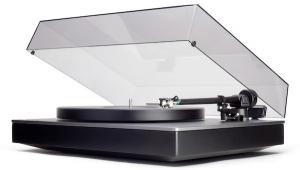Where the article currently says "Original Live", I'm pretty sure you meant Origin Live. Speaking of which, will you be reviewing their arms? I'm very intrigued by them and would love to hear your opinion on the upper range models.
Could you also elaborate on how, in terms of physics, the turntable design (rather than arm/cart) can suppress clicks? I'm not sure I understand how that would work.
Oh, and the second to last paragraph is missing a closing parenthesis.

























































